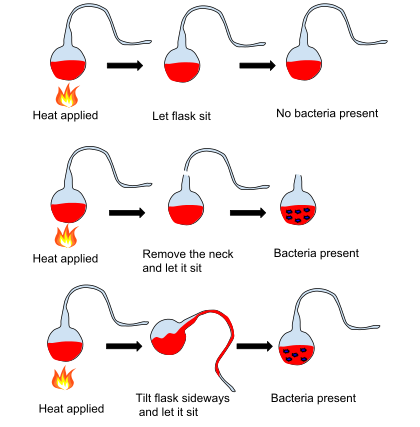The Evolution of Germ Theory: From Miasma to Modern Medicine
Miasma theory, antibiotics, and penicillin. We cannot discuss medical science, or microbiology without discussing those, so we are doing another today, and it is Germ theory.
Germ theory revolves around the concept that specific pathogenic organisms, such as viruses and bacteria, can lead to various diseases. Its influence on medicine cannot be overstated, as it has given rise to critical medical advancements, including vaccines, drugs, and even the development of life-saving mosquito nets. The advent of germ theory marked a significant departure from earlier medical practices, such as bloodletting and the injudicious use of mercury.
To fully appreciate the significance of germ theory, we must acknowledge the intellectual backdrop against which it emerged. The Miasma theory, as discussed in a previous post Miasma Theory, Contagion, and Modern Medicine, posited that diseases could be transmitted through "bad air" or miasma. Moreover, the notion of contagion implied that being in proximity to a sick individual increased the risk of contracting an illness. While this theory had its merits, exceptions emerged, as diseases like bubonic plague, leprosy, and cholera could strike those who hadn't been in contact with the afflicted.

As I mentioned in my previous videos, in the 1800s scientist began to understand that the Miasma theory wasn't working, but then they didn't know what they were going to replace it with since researches were still being done and since there was no way to understand how disease travels over a long time, Miasma was accepted.
Concurrently, physicians entertained the zymotic theory, which attributed diseases to minute organisms known as zymes. According to this theory, conditions like smallpox, cowpox, glanders, syphilis, measles, scarlet fever, cholera, influenza, plague, and typhus were caused by these zymes.
As time went on, doctors started to look at diseases singularly and not as a group. They began to perform autopsy on diseased people so as to be able to find out what caused the death and the what changes the disease had caused to the body and this was the beginning of Pathology.
In 1837, Schleiden and Schwann published their findings that all living organisms consist of cells. This revolutionary insight led pathologists to explore diseases at the cellular level, giving birth to cellular pathology. Another scientist known as Henle which we are familiar with when talking about the loop of henle's then wrote published a paper where he mentioned that instead of saying air causes diseases, it is better to say that organisms in the air or in objects caused it. He talked about isolating germs and animacula in substances. He said that the microorganism has to be found consistently in the bodies suffering from the disease, the microorganism needs to be isolated, and when the microbe is introduced into a new host.
Henle still had a few hiccups as not all the time that he put part of a diseased organism into a healthy one did the healthy experience the same symptom and die, and this left he hanging and this was where Pasteur came in with his work on fermentation, spontaneous generation, and pasteurization, and other scientists like Joseph Lister began to use his model to sanitize the surface of new wounds to prevent infections.

worldhistory
Robert Koch began to experiment with Bacilli Antracics and he began to isolate it in a medium, and then regrew it after which he was able to cause disease with the isolate. He then went on to publish a paper on Bacillus Anthracis and its ability to cause disease. He mentioned that the process of isolating and infecting another organism should be possible with any disease-germ combo thereby allowing them to cause disease. Koch then postulated his theory where he mentioned that the microorganism must be exhibited in all cases of the disease, the distribution of the microorganism must correlate with and explain the disease phenomena, and each disease would be caused by a distinctive germ. Koch after identifying Antrax, was able to discover Micobacterium tuberculosis and Pasteur found a vaccine for Rabies that year.
Koch also discovered Vibrio Cholerae as he was able to isolate it from diseased humans. Koch also improved on his postulate where he mentioned that the germs must be isolated and cultured outside of the test animal, and when the germ is introduced into a new animal, it must give the same symptoms as the original one.
The transition from Miasma theory to Germ theory stands as a testament to the power of human curiosity and scientific progress when it has to do with medicine which has led to a remarkable journey toward understanding and combating diseases, reshaping the practice of medicine and saving countless lives.
Reference
- https://www.ncbi.nlm.nih.gov/pmc/articles/PMC1808550/pdf/bullnyacadmed00090-0076.pdf
- https://books.google.com.ng/books/about/Hippocrates_on_Airs_Waters_and_Places
- https://preprint.press.jhu.edu/bhm/sites/default/files/Schickore.pdf
- https://www.ncbi.nlm.nih.gov/pmc/articles/PMC7513766/
- https://www.ncbi.nlm.nih.gov/pmc/articles/PMC2595276/pdf/yjbm00143-0072.pdf
- https://www.ncbi.nlm.nih.gov/pmc/articles/PMC9854334/
- https://www.jstor.org/stable/41108720
- https://www.jstor.org/stable/23331663
- https://www.jstor.org/stable/24618980
- https://www.cdc.gov/anthrax/basics/anthrax-history.html
- https://www.ncbi.nlm.nih.gov/pmc/articles/PMC545348/
- https://www.jstor.org/stable/43428369
- https://www.jstor.org/stable/2900535?
- https://www.jstor.org/stable/23332272
- https://www.pasteur.fr/en/institut-pasteur/history/middle-years-1862-1877

Thanks for your contribution to the STEMsocial community. Feel free to join us on discord to get to know the rest of us!
Please consider delegating to the @stemsocial account (85% of the curation rewards are returned).
Thanks for including @stemsocial as a beneficiary, which gives you stronger support.